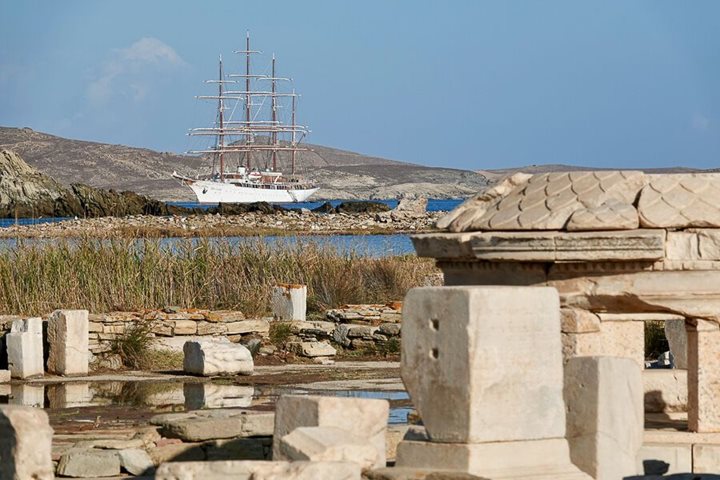Today’s exploration brought us to our first inhabited Cycladic Island, the island of Amorgos. Located at the eastern edge of the Cyclades, Amorgos possesses steep hills covered with the ancient terraces that facilitated agriculture, a relatively common sight in this region. Traveling first to the island’s southeastern shore, we stopped at the base of an imposing limestone cliff housing one of the most important pilgrimage sites in the Greek Orthodox realm. The monastery of the Panagia Hozoviotissa, founded in the 11th century by a Byzantine emperor, was built to house an important icon of the Virgin Mary.
Multiple stories high and just a few meters wide, the monastery is practically pasted onto the sheer cliffs high above the sparkling turquoise waters of the Aegean. Although it is whitewashed today, the stone of the monastery was unpainted in its earliest centuries, allowing this important structure to blend into the natural landscape and escape notice by pirates and other hostile invaders. After hiking up the donkey path, we donned the appropriate clothing—long skirts for women, long pants for men—and entered the monastery to enjoy a brief respite from the sun and heat. Our visit was capped with a sampling of rakomelo, the honey-flavored liquor favored by the monks.
Our visit to the island of Amorgos concluded with a stroll through the charming Cycladic town of Chora, located not far from the famous monastery. In this whitewashed cubist village, tiny cafés and quaint chapels are nestled amidstmeandering, jasmine-lined pathways. Our afternoon lecture on the Aegean Bronze Age, including a discussion of Minoan-style frescoes, was briefly interrupted by several dolphins, themselves a common motif in Bronze Age art.








